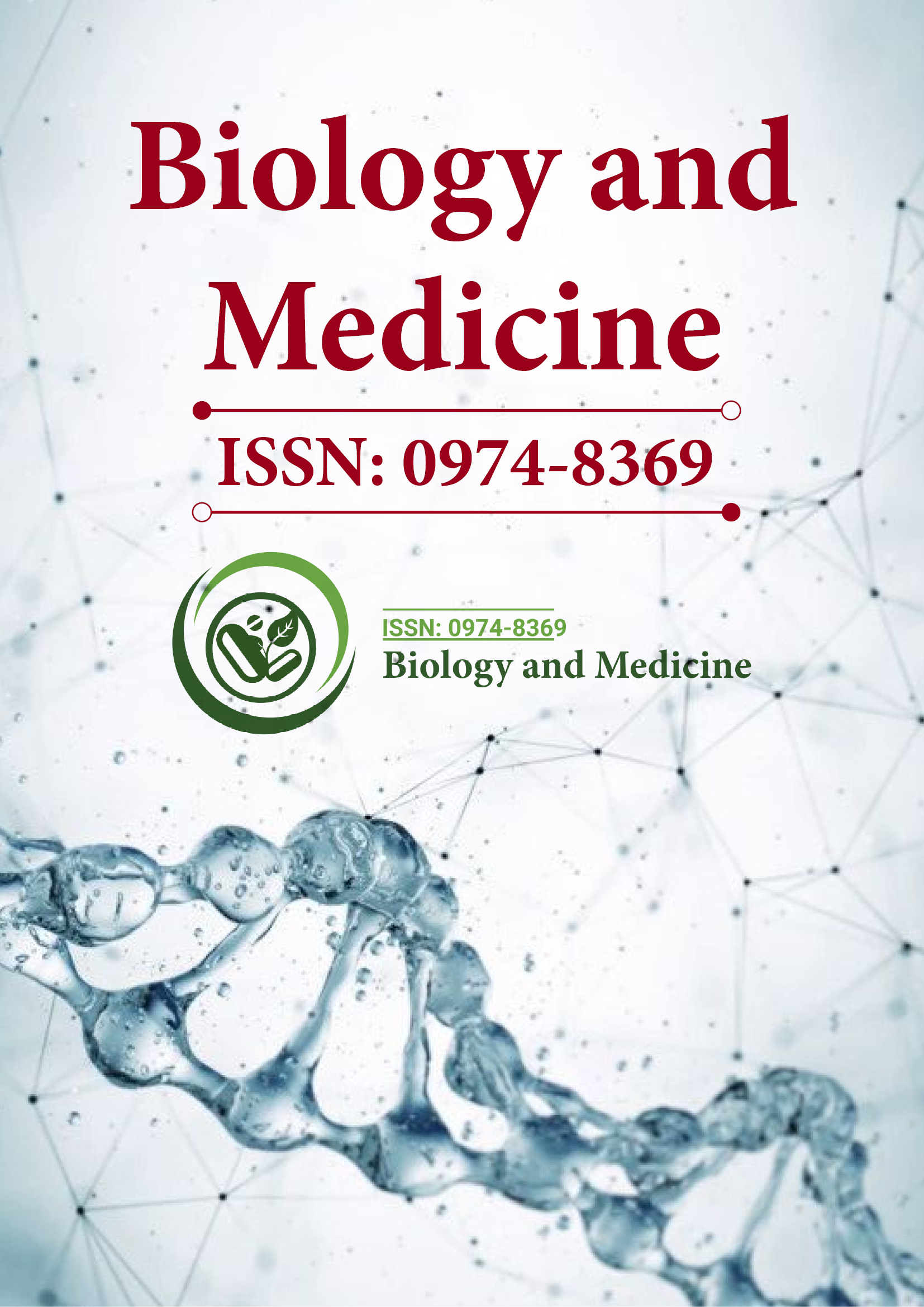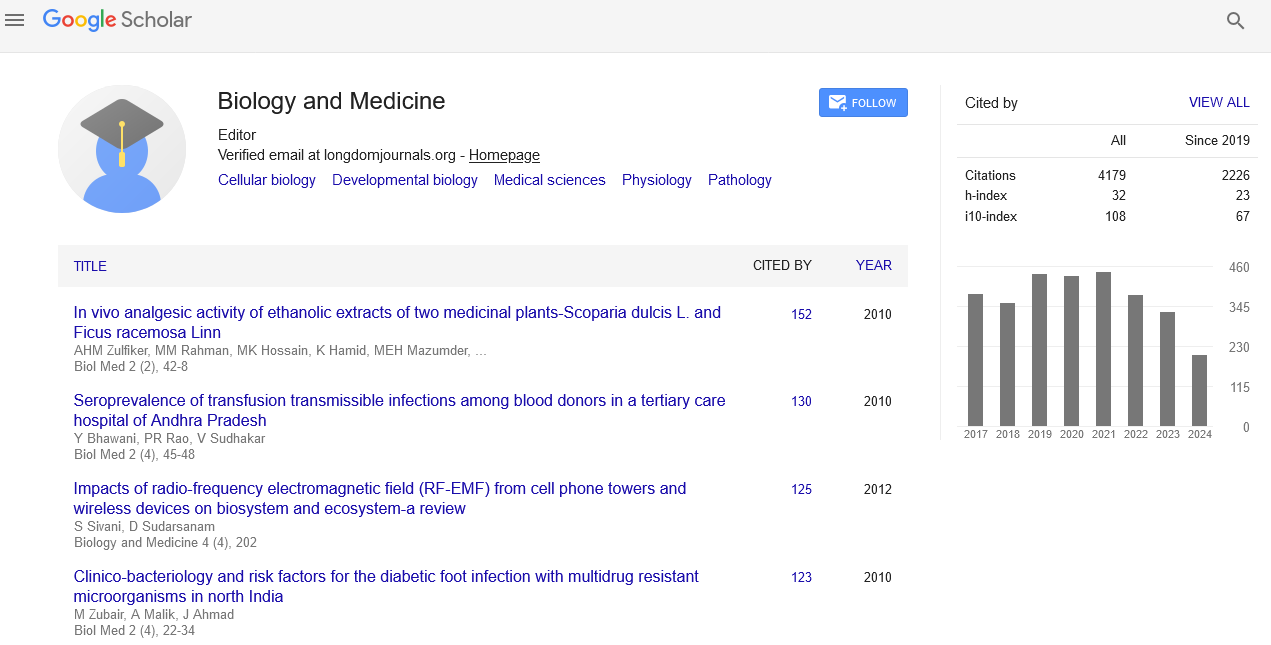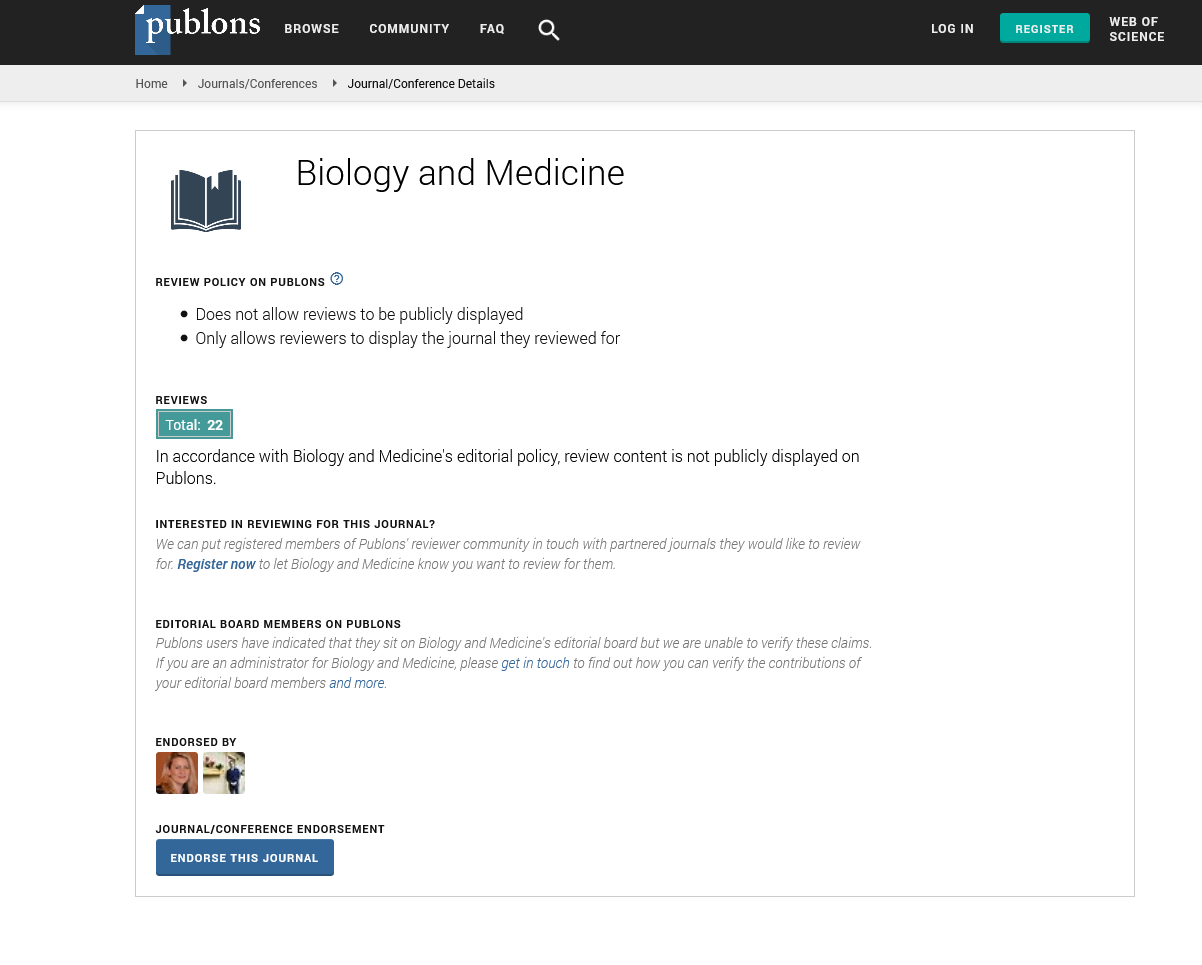Indexed In
- Open J Gate
- Genamics JournalSeek
- CiteFactor
- Cosmos IF
- Scimago
- Ulrich's Periodicals Directory
- Electronic Journals Library
- RefSeek
- Hamdard University
- EBSCO A-Z
- Directory of Abstract Indexing for Journals
- OCLC- WorldCat
- Proquest Summons
- Scholarsteer
- ROAD
- Virtual Library of Biology (vifabio)
- Publons
- Geneva Foundation for Medical Education and Research
- Google Scholar
Useful Links
Share This Page
Journal Flyer

Open Access Journals
- Agri and Aquaculture
- Biochemistry
- Bioinformatics & Systems Biology
- Business & Management
- Chemistry
- Clinical Sciences
- Engineering
- Food & Nutrition
- General Science
- Genetics & Molecular Biology
- Immunology & Microbiology
- Medical Sciences
- Neuroscience & Psychology
- Nursing & Health Care
- Pharmaceutical Sciences
Commentary - (2023) Volume 15, Issue 8
Regulation of Hormone Secretion by the Hypothalamus and Pituitary Gland
Luara Cristina*Received: 25-Jun-2023, Manuscript No. BLM-23-22814; Editor assigned: 28-Jun-2023, Pre QC No. BLM-23-22814; Reviewed: 11-Aug-2023, QC No. BLM-23-22814; Revised: 18-Aug-2023, Manuscript No. BLM-23-22814; Published: 25-Aug-2023, DOI: 10.35248/0974-8369.23.15.599
Description
The regulation of hormone secretion by the hypothalamus and pituitary gland is an intricate process that plays an important role in maintaining homeostasis and coordinating various physiological functions within the human body. This system, often referred to as the hypothalamic-pituitary axis, involves a complex interplay between the hypothalamus, the anterior and posterior pituitary glands, and the target endocrine organs. Through this axis, the body is able to respond to internal and external stimuli by releasing and controlling the levels of various hormones, thereby maintaining a wide range of bodily functions.
The hypothalamus, a small but vital region located at the base of the brain, serves as a master regulator of the endocrine system. Despite its relatively diminutive size, the hypothalamus wields considerable influence over a multitude of physiological processes, from temperature regulation to hunger and thirst, and from sleep-wake cycles to stress responses. One of the most remarkable aspects of the hypothalamus is its ability to sense changes in the internal environment and translate them into hormonal signals that initiate appropriate responses.
The hypothalamus achieves this by producing and releasing a series of neurohormones known as releasing hormones or releasing factors. These substances are secreted into a specialized network of blood vessels known as the hypothalamic-pituitary portal system, which connects the hypothalamus directly to the anterior pituitary gland. Among these releasing hormones are substances such as Thyrotropin-Releasing Hormone (TRH), Corticotropin-Releasing Hormone (CRH), and Gonadotropin- Releasing Hormone (GnRH), each of which plays an important role in regulating the secretion of specific hormones from the anterior pituitary.
The anterior pituitary gland, often referred to as the "master gland," is situated just beneath the hypothalamus and is intricately connected to it through the hypothalamic-pituitary portal system. It responds to the releasing hormones released by the hypothalamus by secreting a variety of hormones that target various endocrine glands throughout the body. These hormones include Growth Hormone (GH), Adrenocorticotropic Hormone (ACTH), Thyroid-Stimulating Hormone (TSH), Luteinizing Hormone (LH), Follicle-Stimulating Hormone (FSH), and prolactin.
The anterior pituitary's secretion of these hormones is tightly regulated through a negative feedback loop involving the hypothalamus. For instance, in the case of thyroid hormone regulation, the hypothalamus releases TRH, which stimulates the anterior pituitary to secrete TSH. TSH, in turn, prompts the thyroid gland to release thyroid hormones. As the levels of thyroid hormones rise in the bloodstream, they exert a negative feedback effect on both the hypothalamus and the anterior pituitary, inhibiting further release of TRH and TSH. This mechanism ensures that hormone levels remain within a narrow physiological range.
In addition to the anterior pituitary, the posterior pituitary gland also plays a role in hormone secretion, albeit in a different manner. Unlike the anterior pituitary, which directly secretes hormones in response to releasing factors from the hypothalamus, the posterior pituitary does not produce its own hormones. Instead, it stores and releases hormones produced by the hypothalamus, namely oxytocin and vasopressin (also known as Antidiuretic Hormone, ADH).
These hormones are synthesized in the hypothalamus and transported down through the axons of hypothalamic neurons to the posterior pituitary, where they are stored in vesicles. Oxytocin is involved in uterine contractions and milk ejection during breastfeeding, while vasopressin regulates water balance by affecting water reabsorption in the kidneys.
Citation: Cristina L (2023) Regulation of Hormone Secretion by the Hypothalamus and Pituitary Gland. Bio Med. 15:599.
Copyright: © 2023 Cristina L. This is an open-access article distributed under the terms of the Creative Commons Attribution License, which permits unrestricted use, distribution, and reproduction in any medium, provided the original author and source are credited.


